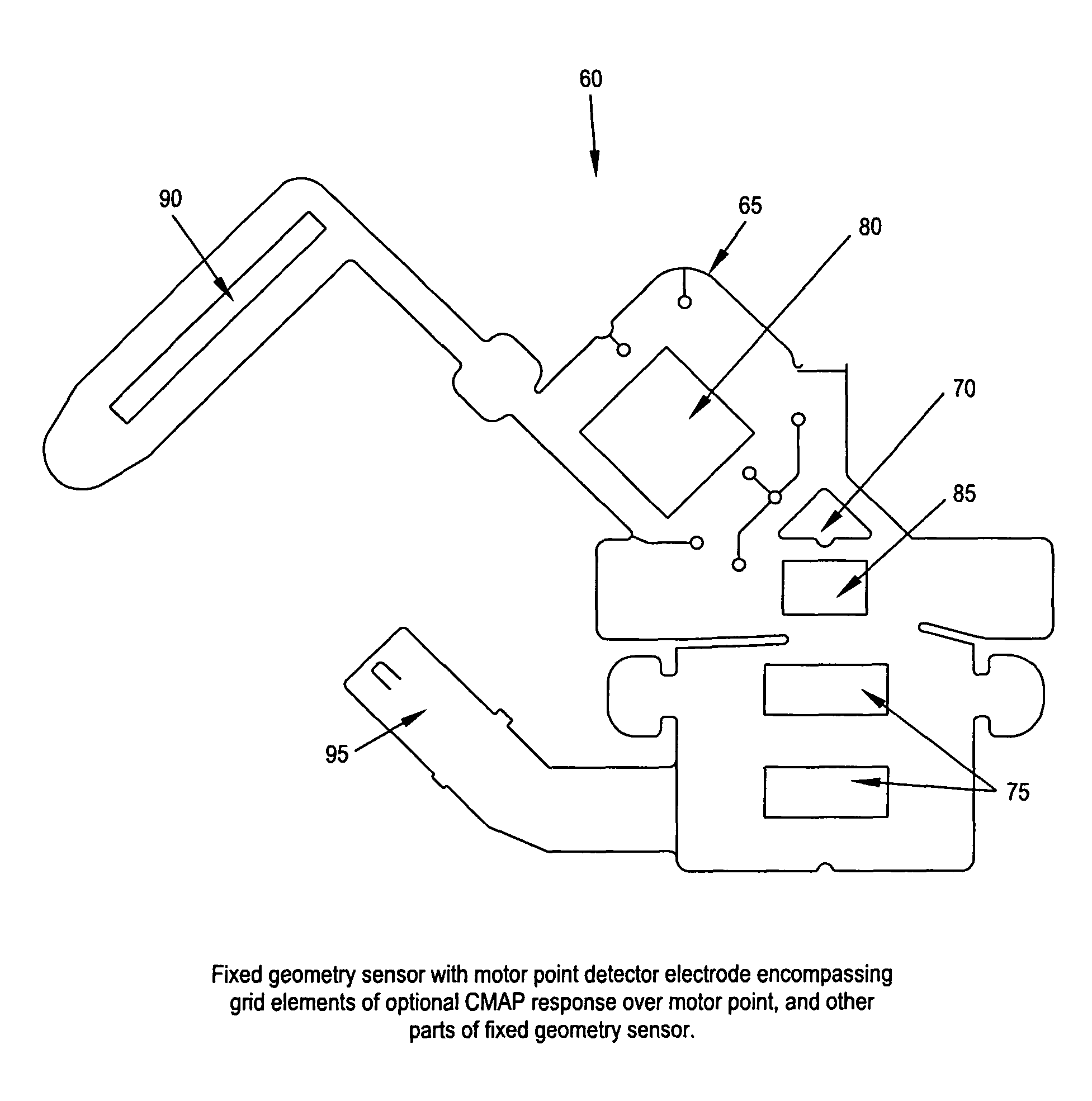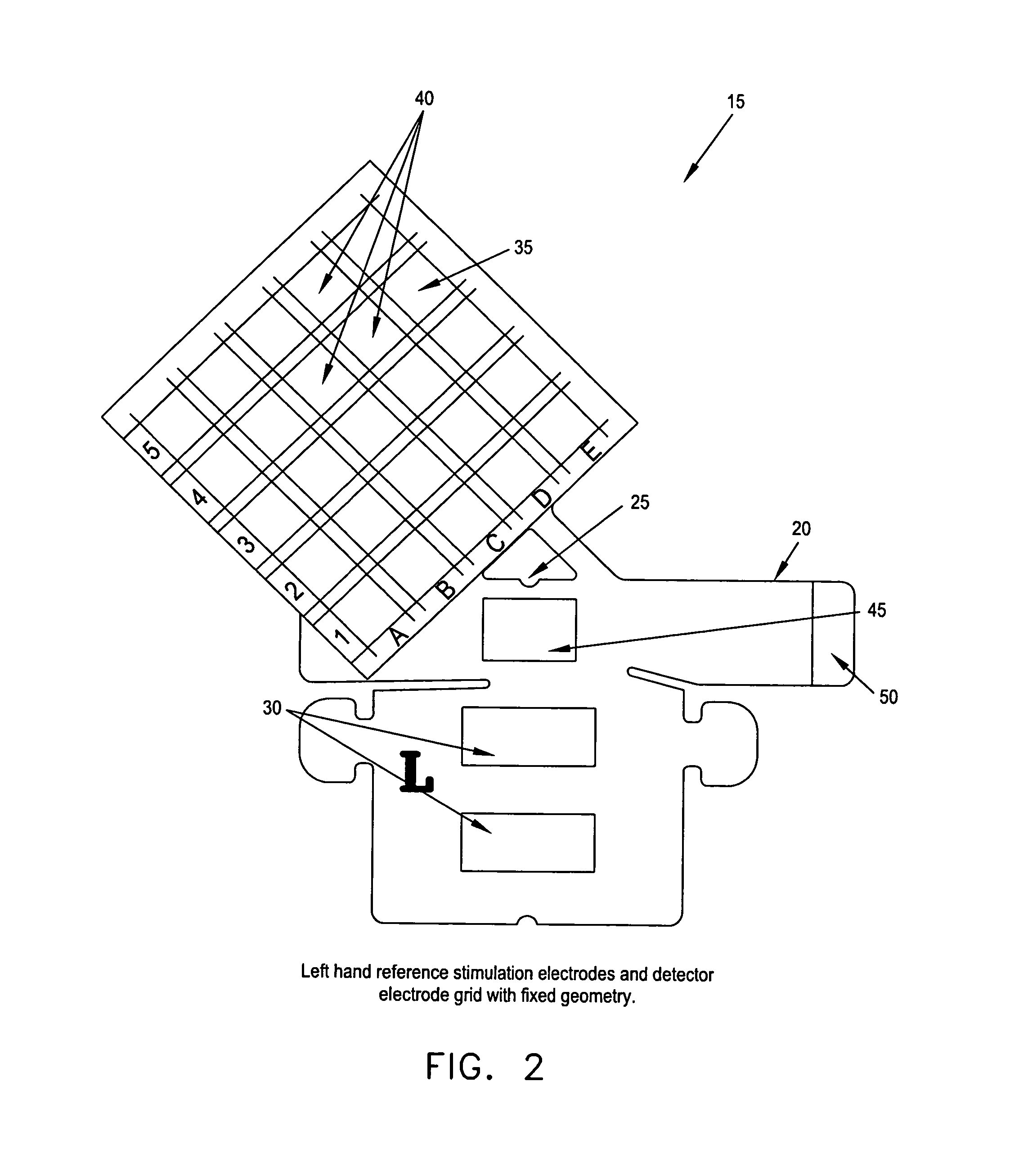Method and apparatus for determining optimal neuromuscular detection sites, novel diagnostic biosensor array formed in accordance with the same, and novel method for testing a patient using the novel diagnostic biosensor array
a neuromuscular and optimal detection technology, applied in the field of methods and apparatus for improving the detection of signals indicative of neuromuscular function, can solve the problems of compromising hand use, abnormally long delay, and discomfort and/or loss of hand sensation, and achieve the effect of enhancing the accuracy of results and greater amplitud
- Summary
- Abstract
- Description
- Claims
- Application Information
AI Technical Summary
Benefits of technology
Problems solved by technology
Method used
Image
Examples
Embodiment Construction
Overview
[0070]As is well known to those skilled in the art of analyzing bioelectric signals, it is generally desirable to operate on waveforms which have as large an amplitude as possible. This increases the signal-to-noise ratio and makes key waveform features easier to discern, thereby providing better information that is critical to the quality and effectiveness of manual or automated signal processing. These benefits result in more accurate neurophysiological measurements, e.g., such as for the assessment of neuromuscular function.
[0071]In the following discussion, the motor point is used as an illustrative, but not exclusive, example of (i) finding the desired detection site for neuromuscular testing, and (ii) using that detection site to conduct over-muscle and / or over-nerve testing.
[0072]The over-muscle signal recorded at the motor point has a significantly greater amplitude than a volume-conducted signal for the same muscle. The myoelectrical signal that results from the sti...
PUM
 Login to View More
Login to View More Abstract
Description
Claims
Application Information
 Login to View More
Login to View More - R&D
- Intellectual Property
- Life Sciences
- Materials
- Tech Scout
- Unparalleled Data Quality
- Higher Quality Content
- 60% Fewer Hallucinations
Browse by: Latest US Patents, China's latest patents, Technical Efficacy Thesaurus, Application Domain, Technology Topic, Popular Technical Reports.
© 2025 PatSnap. All rights reserved.Legal|Privacy policy|Modern Slavery Act Transparency Statement|Sitemap|About US| Contact US: help@patsnap.com



